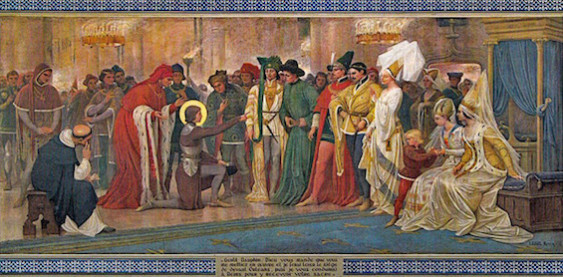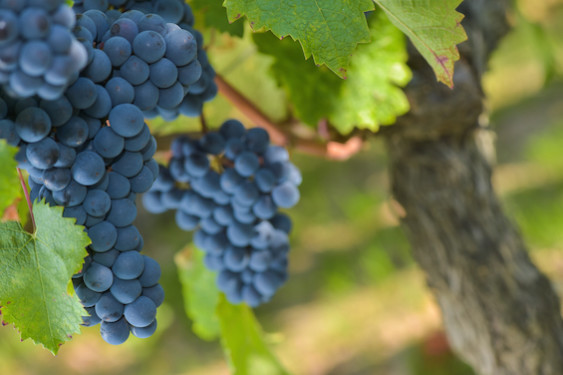With freezing temperatures (and even snow!) in much of the east, and a row of storms threatening the west coast, this might just be the perfect weekend to settle in for a glass (or bottle) of red wine around the fireplace before rising temperatures drive us all to drink whites and rosés for the next few months.
That’s what I plan to do, and my wine might just be a nice bottle of Chinon from France’s Loire Valley. Though hearty and full-bodied, these reds, which are made from Cabernet Franc grapes, are light enough to be food-friendly. And they come with a really good story.

Chinon is famous for its castle and its wines.
Like many of the best episodes from French history, this one has to do with wine. And Joan of Arc. You see, at the height of the Hundred Years War, the medieval heroine was searching high and low through the French countryside for the Dauphin, Charles VII. She claimed to have heard heavenly voices, including those of several angels and saints, proclaiming that she would be victorious in battle against the English and would help the Dauphin be crowned King of France. To do so, he would have to get to Reims (which, incidentally, is the capital of another famous wine region, Champagne), where the coronations of the kings of France traditionally took place.
Joan finally tracked down the Dauphin at the chateau of Chinon, located on a promontory above the banks of the Loire, where he was hiding after some rather embarrassing defeats. After all, if he was going to have a wandering court, he might as well do it in castles surrounded by some of France’s best vineyards. When Joan arrived in March of 1429, after an 11-day journey through enemy territory, she came with the purpose of persuading Charles to give her an army to fight the English and break their siege of the city of Orléans. All at the tender age of 17! But first, she had to actually meet him.
This is where history and legend blur, though after a glass or two of Chinon, I’m more inclined to believe the legend. Apparently Charles kept Joan waiting for a few days, probably trying to figure out if she was a total wackadoo. When he finally summoned her, it was to a gathering of his court where he was supposedly disguised himself as an ordinary courtier and had another man claim to be the Dauphin. Just to see how Joan would react.

Joan picked the Dauphin out immediately.
She wasn’t fooled for a moment. She recognized the true Dauphin through the crowd and came right up to him to pledge her allegiance and convince him to give her an army to fight the English.
Joan did break the siege of Orléans, escorted Charles VII to Reims for his coronation, and inspired the entire nation to take arms. Although Joan herself met a tragic end, her courage and conviction helped turn the Hundred Years War in France’s favor and eventually the English were given the heave ho.
I love the story of Joan’s visit to Chinon for a lot of reasons. First, that you underestimate people at your own peril. Second, that if your purpose is good and true, nothing can hold you back. And finally, how the courage of a single person can change the tide of history. But I also love it because it just happens to take place in one of France’s most distinguished wine regions, and one that is also rich in history, lore, and fine cuisine.
If you plan a visit to France, I’d highly recommend a stop by the hilltop chateau for its fantastic views of the Loire Valley. But if you can’t make it there anytime soon, at least you can taste a little bit of its history in a glass.

Red Chinons are made mostly from Cabernet Franc – so they have body and intensity but are still light enough to be food-friendly.
Here are two Chinons you can try this weekend.
Pierre et Catherine Breton “Beaumont”: Pierre and Catherine are two pioneers of biodynamic winemaking in the Loire, and their productions are pretty fantastic. The grapes from this one are grown on 40-year-old vines, and the wine is redolent with lively raspberry and cherry notes that make it feel fresh juicy.
Pithon-Paillé “Dessus Narçay”: This wine comes from another famous producer in the Loire and is sourced from 50-year-old vines. It is also fresh with red-berry flavors and a hint of smokiness.

